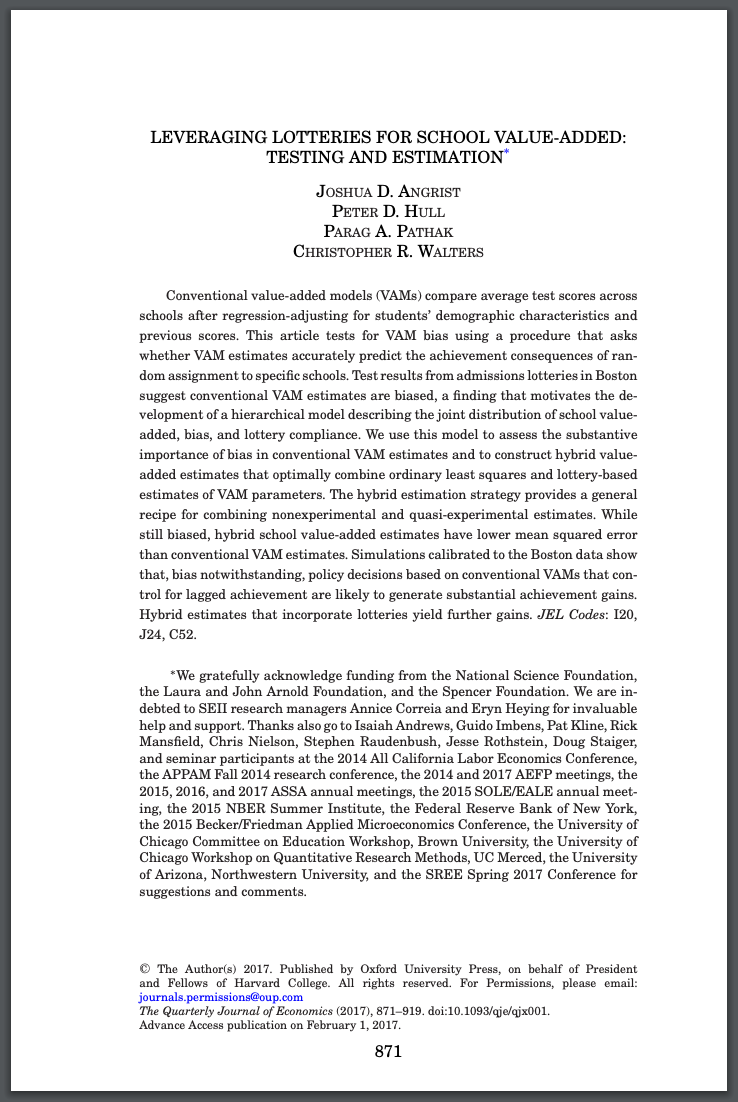
News and Publications

Leveraging Lotteries for School Value-added: Testing and Estimation
Angrist, Joshua D., Peter D. Hull, Parag A. Pathak, and Christopher R. Walters. The Quarterly Journal of Economics 132, no. 2 (2017): 871-919.
Conventional value-added models (VAMs) compare average test scores across schools after regression-adjusting for students’ demographic characteristics and previous scores. This article tests for VAM bias using a procedure that asks whether VAM estimates accurately predict the achievement consequences of random assignment to specific schools. Test results from admissions lotteries in Boston suggest conventional VAM estimates are biased, a finding that motivates the development of a hierarchical model describing the joint distribution of school value- added, bias, and lottery compliance. We use this model to assess the substantive importance of bias in conventional VAM estimates and to construct hybrid value- added estimates that optimally combine ordinary least squares and lottery-based estimates of VAM parameters. The hybrid estimation strategy provides a general recipe for combining nonexperimental and quasi-experimental estimates. While still biased, hybrid school value-added estimates have lower mean squared error than conventional VAM estimates. Simulations calibrated to the Boston data show that, bias notwithstanding, policy decisions based on conventional VAMs that control for lagged achievement are likely to generate substantial achievement gains. Hybrid estimates that incorporate lotteries yield further gains.
